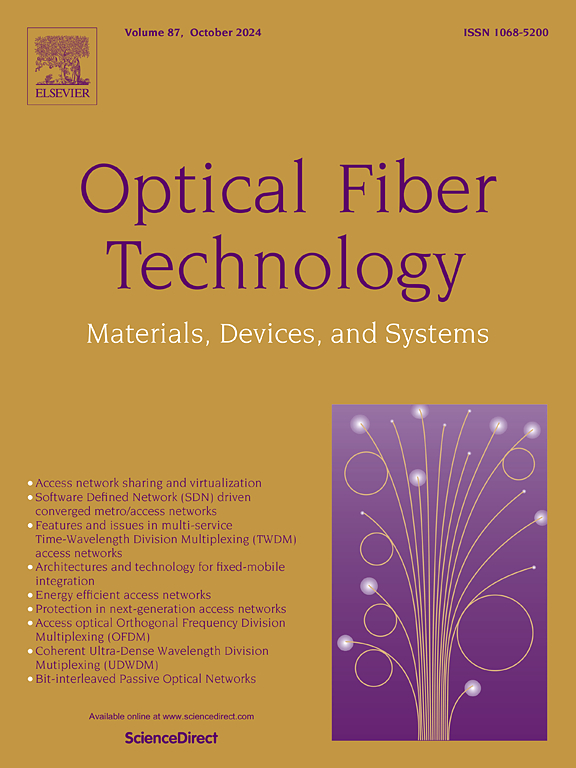Machine learning opportunities for integrated polarization sensing and communication in optical fibers
IF 2.6
3区 计算机科学
Q2 ENGINEERING, ELECTRICAL & ELECTRONIC
引用次数: 0
Abstract
As the bedrock of the Internet, optical fibers are ubiquitously deployed and historically dedicated to ensuring robust data transmission. Leveraging their extensive installation, recent endeavors have focused on utilizing these telecommunication fibers also for environmental sensing, exploiting their inherent sensitivity to various environmental disturbances. In this paper, we consider integrated sensing and communication (ISAC) systems that combine data transmission and sensing functionalities, by monitoring the state of polarization to detect environmental changes. In particular, we investigate various machine learning techniques to enhance the performance and capabilities of such polarization-based ISAC systems. Gradient-based techniques such as adaptive zero-forcing equalization are examined for their potential to enhance sensing accuracy at the expense of communication performance, with strategies discussed for mitigating this trade-off. Additionally, the paper reviews novel machine-learning-based approaches for blind channel estimation using variational autoencoders, aimed at improving channel estimates compared to traditional adaptive equalization methods. We also discuss the problem of distributed polarization sensing and review a recent physics-based learning approach for Jones matrix factorization, potentially enabling spatial resolution of sensed events. Lastly, we discuss the potential of leveraging dual-functional autoencoders to optimize ISAC transmitters and the corresponding transmit waveforms. Our paper underscores the potential of telecom fibers for joint data transmission and environmental sensing, facilitated by advancements in digital signal processing and machine learning.
求助全文
约1分钟内获得全文
求助全文
来源期刊

Optical Fiber Technology
工程技术-电信学
CiteScore
4.80
自引率
11.10%
发文量
327
审稿时长
63 days
期刊介绍:
Innovations in optical fiber technology are revolutionizing world communications. Newly developed fiber amplifiers allow for direct transmission of high-speed signals over transcontinental distances without the need for electronic regeneration. Optical fibers find new applications in data processing. The impact of fiber materials, devices, and systems on communications in the coming decades will create an abundance of primary literature and the need for up-to-date reviews.
Optical Fiber Technology: Materials, Devices, and Systems is a new cutting-edge journal designed to fill a need in this rapidly evolving field for speedy publication of regular length papers. Both theoretical and experimental papers on fiber materials, devices, and system performance evaluation and measurements are eligible, with emphasis on practical applications.
 求助内容:
求助内容: 应助结果提醒方式:
应助结果提醒方式:


